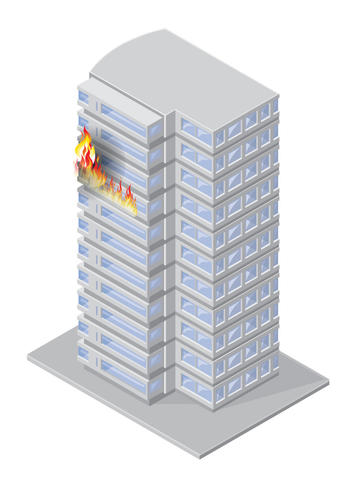Safety of Building Occupants, Building Egress
This page is part of the Fire on the Web archive—a collection of historical fire research resources from NIST. The content is no longer actively maintained. For the most up-to-date fire data, software, and publications, please visit the Fire Research Division website and the NIST Publications Portal.

Historically, building egress systems have evolved in response to specific large loss incidents. Currently, systems are designed around a concept of providing stair capacity for the largest occupant load floor in the building with little or no consideration of occupant behavior, needs of emergency responders, or evolving technologies. Aggressive building designs, changing occupant demographics, and consumer demand for more efficient systems have forced egress designs beyond the traditional stairwell-based approaches, with little technical foundation for performance and economic trade-offs. In cooperation with the U.S. General Services Administration and other government and private organizations, NIST is working to establish a technical foundation for egress provisions that eliminates egress design as a contributor to fire deaths and minimizes the total social cost of the provisions.
Building Occupant Evacuation Data
As part of a program to better understand occupant behavior during building emergencies, the Building and Fire Research Laboratory at the National Institute of Standards and Technology (NIST) has been collecting movement data on stairs during fire drill evacuations of office and residential buildings. These data collections are intended to provide a better understanding of this principal building egress feature and develop a technical foundation for future codes and standards requirements.
Movement on Stairs During Building Evacuations
Simple Estimates of Building Egress Time
NIST has developed a simple tool that combines estimates of stairwell and elevator egress timing to provide an overall estimate of evacuation from buildings. It is based on methods developed in the Society for Fire Protection Engineers Handbook for egress using stairwells and the work of Klote and Alvord on modeling elevator evacuations. A description of the model, including Instructions for Use, can be found in the report linked here: Simple Estimates of Combined Stairwell / Elevator Egress in Buildings
Download Egress Estimator Software
Publications
In addition to the collection of data from building evacuations, NIST is active research on human behavior during emergencies, engineering requirements for safe building egress, and egress modeling. A range of publications are available from this research.

